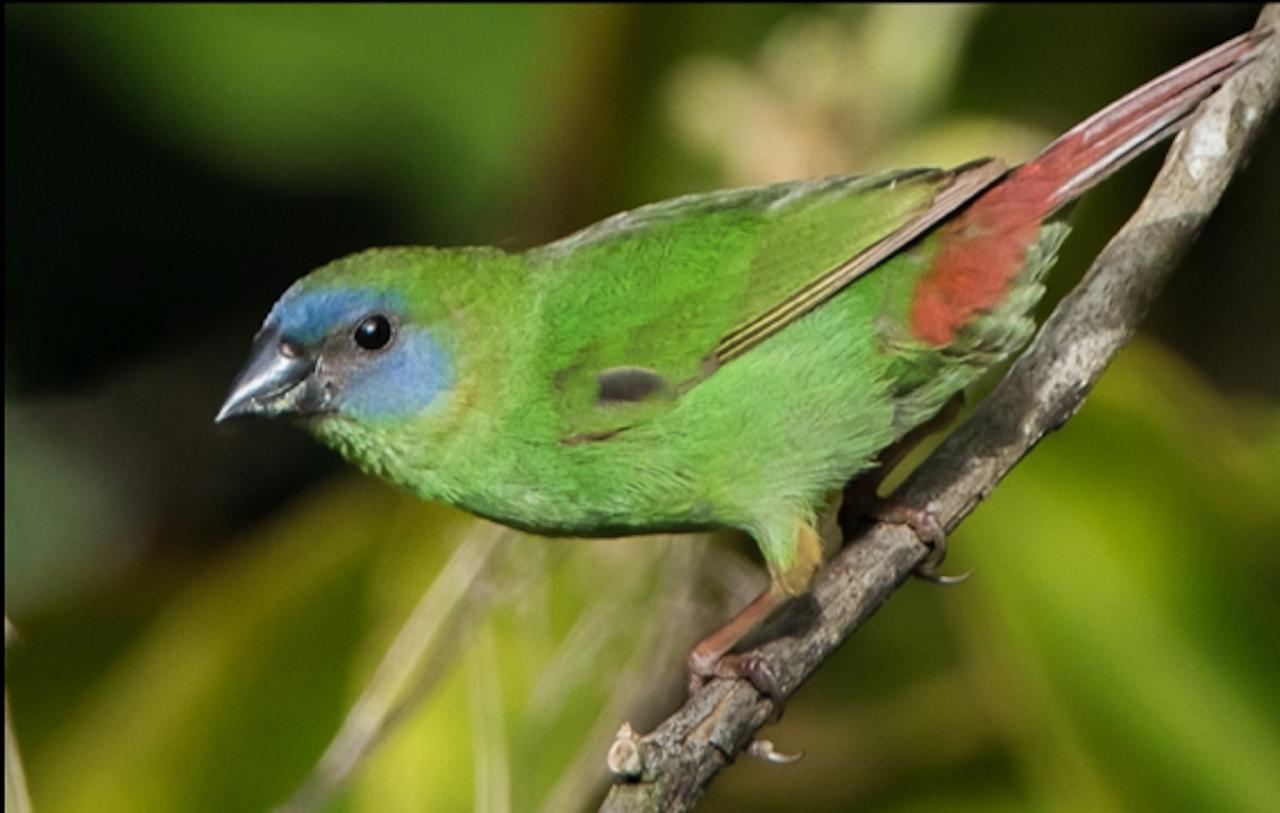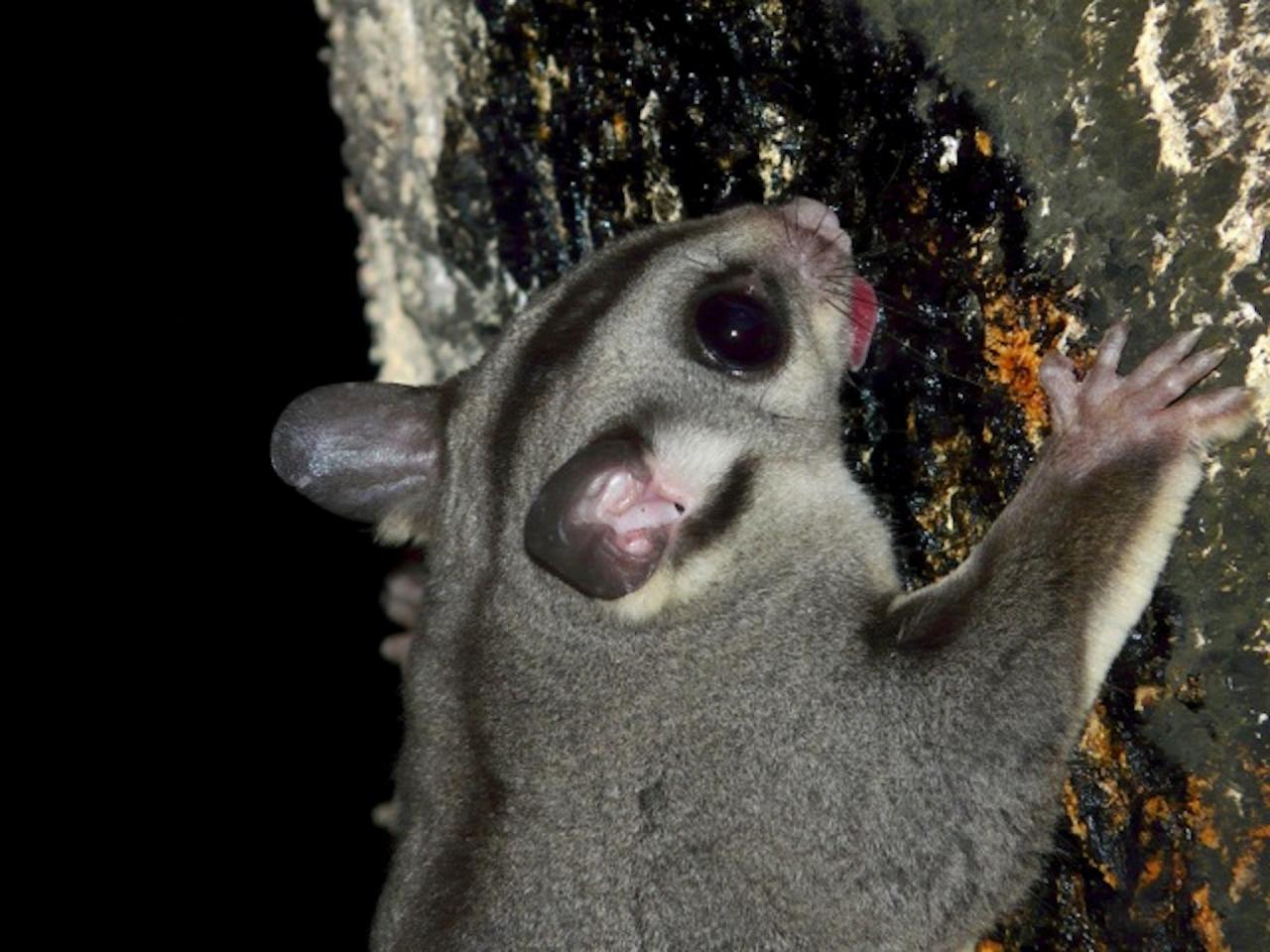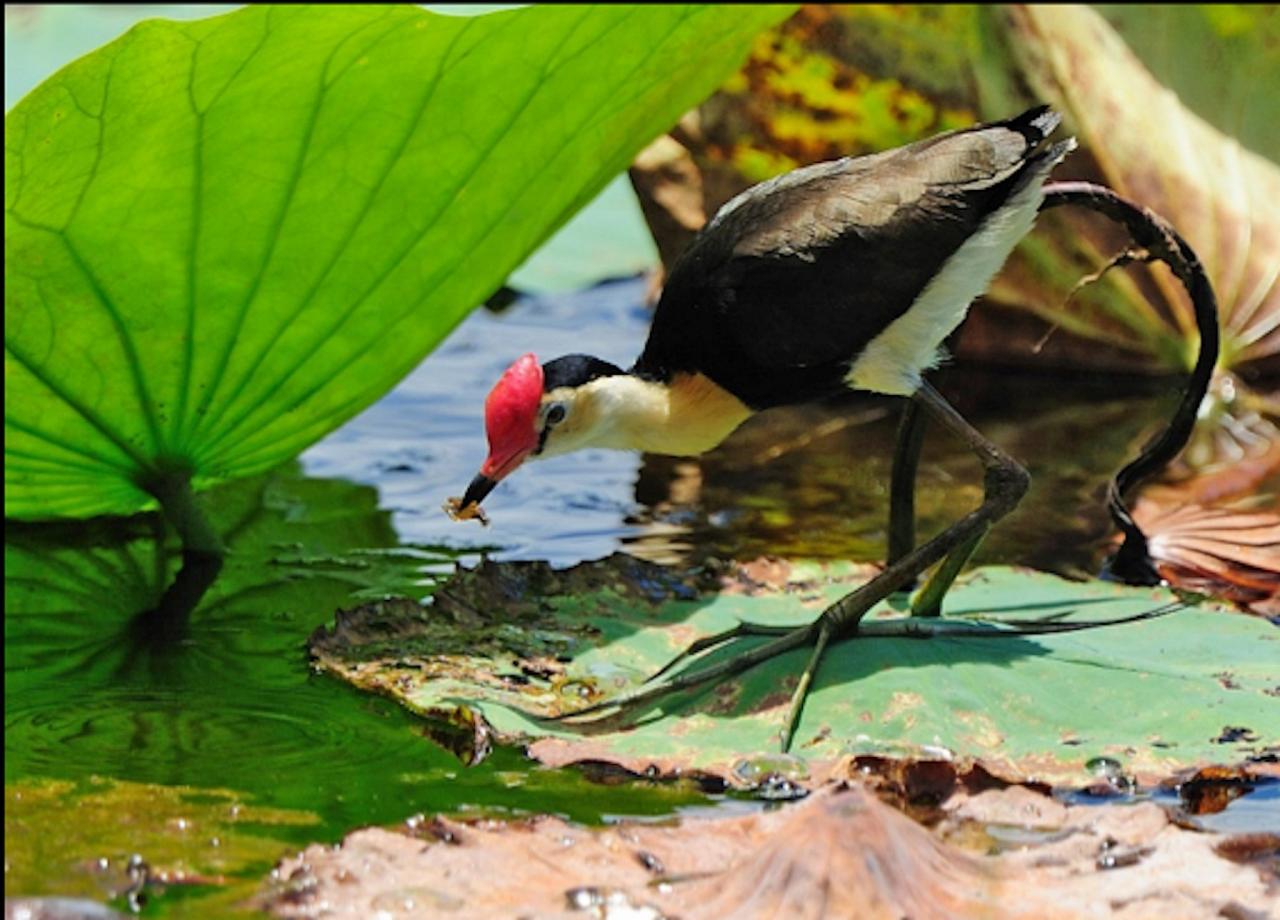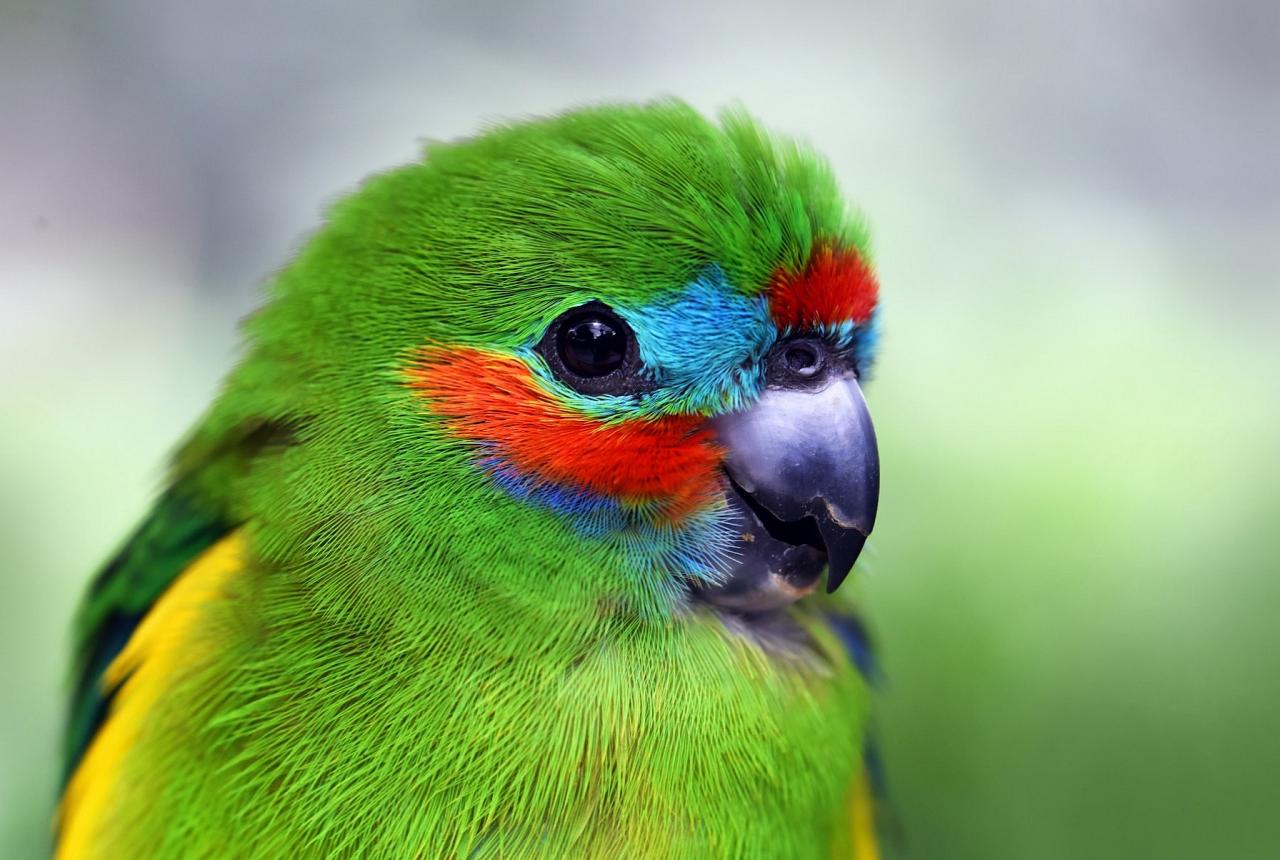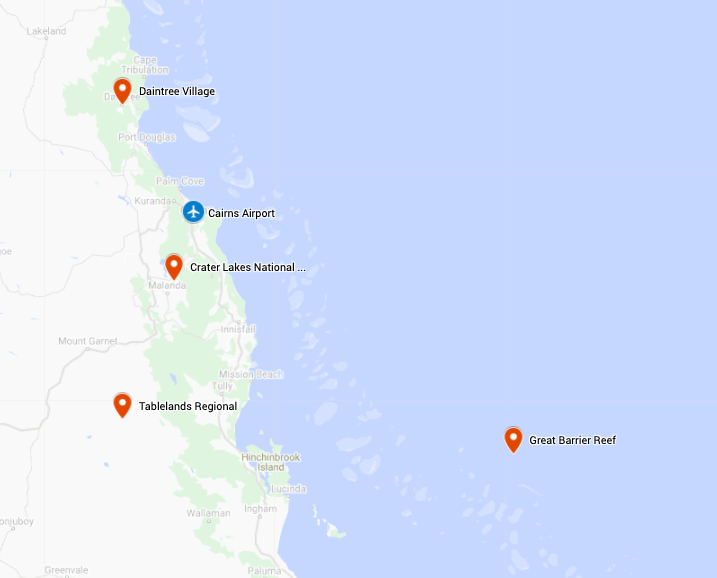Exploring North Queensland and the Daintree Region is legendary among birders, with so many species ranking off the charts for color, beauty, and song. This is a lush coastal area that combines mountain, rainforest, and ocean birding in Australia’s most fertile area. The driving routes are spectacular and not long, so you have plenty of field time to take it all in. Interspersed with forest and coastal walks are boat trips and an ocean cruise to experience the Great Barrier Reef.
The Cairns Botanic Garden is extensive, housing one of the best tropical plant collections in the world. While Cairns is a bustling and vibrant city, the Atherton Tablelands and Daintree are rural, with quaint, small villages hosting artist studios, renowned wood-carvers, coffee and tea shops, and parks. Crater Lakes National Park preserves two clear-water volcanic lakes and pristine montane rainforest with specialty species including rare mammals. This tour can be a stand-alone for those exploring Australia or is perfect to combine with our Papua New Guinea Trip, adding many exciting species.
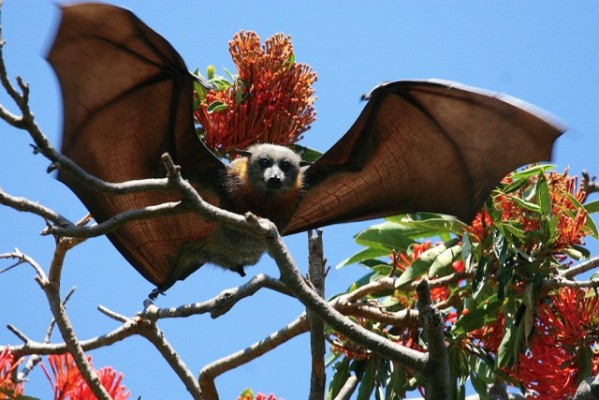
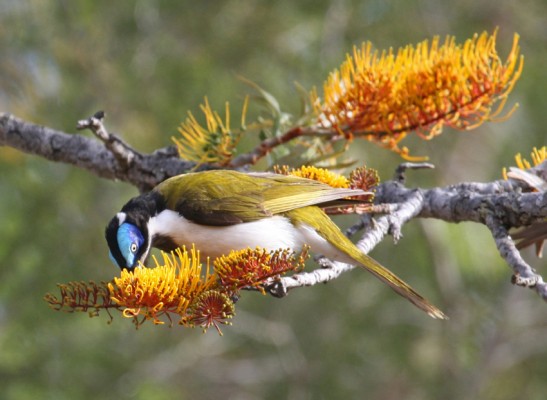
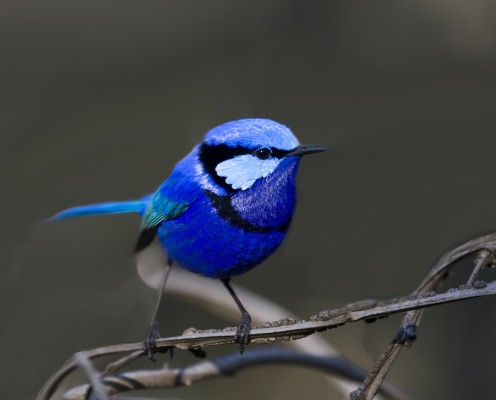
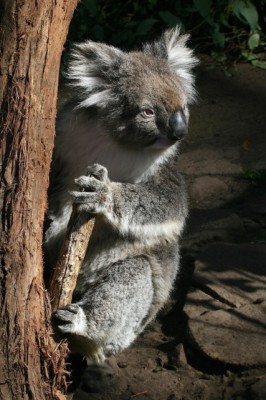
Tour Highlights
- Birdwatch in one of the world’s most special places with a fabulous array of species
- Enjoy spectacular coastal scenery driving north from Cairns to Daintree
- Spot shorebirds from the Cairns Esplanade
- Visit the world-famous Cairns Botanic Gardens, also a birding hotspot
- Walk a boardwalk trail through giant trees observing birds and ancient Gondwana plant species
- Discover rare mammals on a night spotlighting trip
- Stay in forest cottages in the Tablelands, totally surrounded by lush trees and bird song
- Cruise the Daintree River spotting kingfishers and crocodiles
- Experience the wonders of the Great Barrier Reef on an all-day cruise
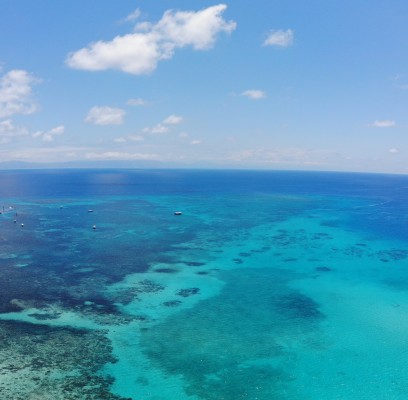
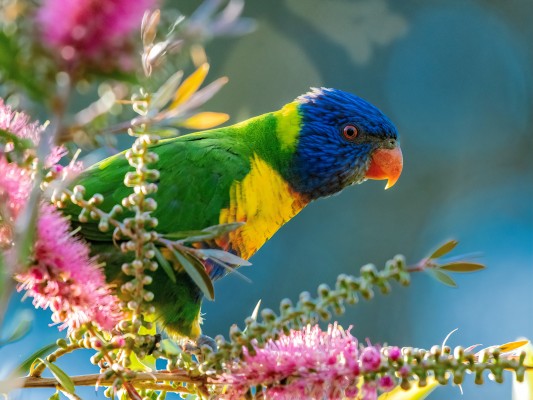
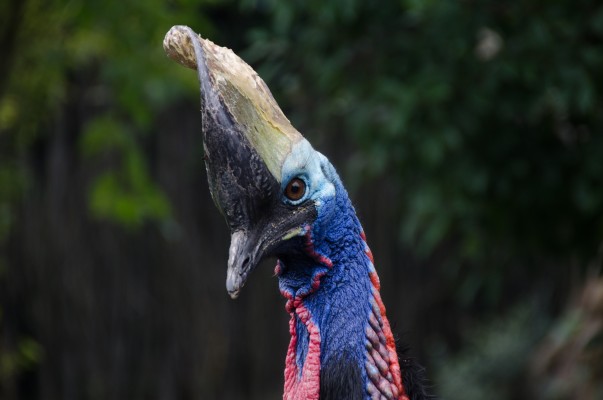
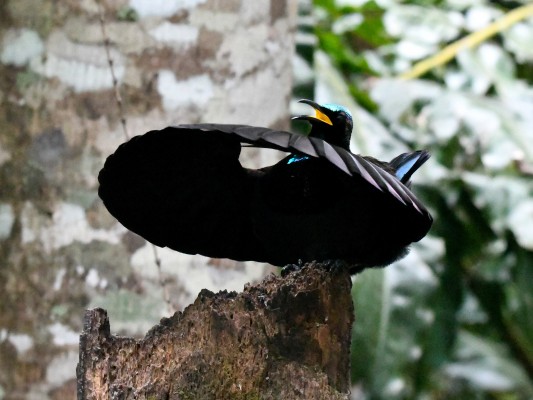
Trip Itinerary
Itineraries are guidelines; variations in itinerary may occur to account for weather, road conditions, closures, etc. and to maximize your experience.
Fri., Aug. 15 Arrivals in Cairns
Arrive no later than today in Cairns, Australia (CNS). This ocean-front city is backed by lush green mountains, an impressive place to arrive! Settle into your accommodations this afternoon and rest up from travels.
At 6:30 PM join your guide and travel companions for a welcome dinner and orientation.
Accommodations in Cairns (D)
Sat., Aug. 16 Birding the Local Cairns Area
After breakfast, we take a walk along Cairn’s waterfront Esplanade. This park has lovely flowering trees and in them we look for local bird specialties like Varied Honeyeater, Torresian Imperial Pigeon, Rainbow Lorikeet, Mangrove Robin, Torresian Kingfisher, Rose-crowned Fruit-dove, and Olive-backed Sunbird.
The park also faces the ocean, so we can scan for shorebirds out on the extensive mudflats here, finding species such as Far Eastern Curlew, Great Knot, Sharp-tailed Sandpiper, and Terek Sandpiper. There should also be Gull-billed Tern, Australian Pelican, Eastern Osprey, and maybe an Eastern Reef Egret or two. This is a great time of year for migratory waders and seabirds and we have a chance to return here based on timing of tides.
Nearby, the renowned Cairns Botanic Gardens hold several different species and we look for Black Butcherbird, Cicadabird, Brown-backed Honeyeater, Australian Brush-turkey, Australasian Darter, Azure Kingfisher, Radjah Shelduck, Magpie Goose, Bush Stone-curlew, Helmeted Friarbird, Large-billed Gerygone, and Orange-footed Scrubfowl. This garden has outstanding tropical plant collections—more extensive than one visit can do justice to but we begin today! The Gondwana Heritage Garden and Rainforest Boardwalk are both fabulous introductions to places we visit during our tour. The Bamboo collection is extensive, and the freshwater lake always attracts a host of birds.
Late in the afternoon we visit a local park to see whether the resident pair of Rufous Owl is in residence. Enjoy sunset and dinner at a local restaurant.
Accommodation in Cairns (B,L,D)
Sun., Aug. 17 Cairns to Atherton Tablelands
After a pre-breakfast walk, we head south of Cairns to look for one of Australia’s most amazing and prehistoric-looking birds, the Southern Cassowary. If our good fortune is in, we should see at least one or two of these stately ratites on the roadside at a coastal rainforest location on our way. Other birds seen here recently include Lovely Fairy-wren, Macleay’s Honeyeater, White-bellied Sea-eagle, and Pheasant Coucal.
From here we head up towards the famous Atherton Tablelands, where with a few road-side stops we should pick up birds like Yellow-spotted and Graceful Honeyeaters, Australian Swiftlet, Little Shrike-thrush, Australasian Figbird, Rainbow Bee-eater, Metallic Starling, White-bellied Cuckoo-shrike, Mistletoebird, and Masked Lapwing to name a few. The Tablelands are about an hour’s drive up the Gillies Range from Cairns.
Reaching our destination for the next four nights near the Crater Lakes National Park we settle in and have a good look around. Surrounded by high altitude rainforest, our accommodation has a plethora of visitors to the gardens and fruiting trees, and birds like Victoria’s Riflebird, Spotted Catbird, Grey-headed Robin, Barred Cuckoo-shrike, Wompoo Fruit-Dove, Superb Fruit-Dove, Pale Yellow Robin, Scarlet Honeyeater, Eastern Spinebill, Red-browed Finch, and Olive-backed Oriole are all regular visitors.
Accommodations in cabins at a forest lodge near Crater Lakes National Park (B,L,D)
Mon., Aug. 18 – Wed., Aug. 20 Birding Hotspots of the Atherton Tablelands
Over the next few days, using our base near Crater Lakes National Park, we explore the wide variety of habitats that are within our reach here on the Atherton Tablelands. This is a charming area, with many artist studios and quaint towns dotting the agricultural and wildland setting.
With high altitude rainforest, tropical savannah woodlands, grassland and agricultural fields, wetlands, and swamps to explore, we look at wetland and open area birds like Brolga, Sarus Crane, Great Crested Grebe, Plumed Whistling-Duck, Nankeen Night-heron, Yellow-billed Spoonbill, White-necked Heron, Black-necked Stork, and Buff-banded Rail.
In forested areas of the Atherton Tablelands and the parks two sections (Lake Eacham and Lake Barrine) we look for a host of specialities including White-headed Pigeon, Pacific Baza, Spotted Harrier, Lesser Sooty Owl, the rainforest-inhabiting race lurida of Southern Boobook (a possible future spilt—Little Red Boobook), Tooth-billed Catbird, Fernwren, Bridled Honeyeater, Atherton Scrubwren, Fairy and Brown Gerygones, Mountain Thornbill, Chowchilla, Bower’s Shrike-thrush, Double-eyed Fig-Parrot, Black-faced, Pied, Spectacled, and White-eared Monarchs, Shining Bronze-cuckoo, Fan-tailed Cuckoo, and Grey-headed Robin. Marvel at massive Kauri “pines” amid this fascinating and rainforest and enjoy a boat trip on Lake Barrine.
Mammals in the area we have a great chance of seeing include Striped Possum, Sugar Glider, Long-nosed Bandicoot, Musky Rat Kangaroo, Green Ringtail Possum, Red-legged Pademelon, Agile Wallaby, and Giant White-tailed Rat. Some mammals are best seen on night walks with spotlighting.
Our meals are at the lodge, some picnic lunches, and in local restaurants as we explore the area.
Accommodations at a forest lodge near Crater Lakes National Park (B,L,D)
Thurs., Aug. 21 Atherton Tablelands to Daintree
After a final morning’s birding in the rainforest looking for any bird species we may still be missing, we leave the higher latitude rainforests of the tablelands and head north to the Daintree River region, via a range of open woodland habitats and tropical savannahs. We drive north along the coast, making stops to explore forested areas, including some patches with ancient Gondwana species. Views of the coast are superlative!
Birds we hope to connect with today include Australian Bustard, Black-necked Stork, Red-tailed Black-Cockatoo, Sulphur-crested Cockatoo, Squatter Pigeon, White-throated Honeyeater, Grey-crowned Babbler, Noisy and Little Friarbirds, White-throated Gerygone, Red-winged Parrot, Great Bowerbird, Cotton Pygmy-goose, Pale-headed Rosella, Blue-winged Kookaburra, and Yellow Oriole.
Our destination for the evening is the delightful Daintree River area and our accommodations overlook this iconic waterway, where the following morning we take an early cruise.
You may never want to leave Daintree! Settled by timber-cutters in the 1870s, today this artisan community is surrounded by fruit farms, small sustainable cattle farms, and pristine rainforest so prized by visiting birders. Local craftsmen are known for their wood-carving. The Daintree River flows through town, along with verdant local gardens attracting both birds and butterflies.
Our meals while here are at delightful local restaurants with some picnic lunches.
Accommodations in cabins at Daintree Village (B,L,D)
Fri., Aug. 22 Daintree River Cruise | Return to Cairns
This morning we enjoy a special birding boat cruise on the Daintree River where we should find both Azure and Little Kingfisher, Large-billed Gerygone, Black Bittern Pacific Baza, Varied Triller, Shining Flycatcher, Chestnut-breasted Mannikin, Brown-backed Honeyeater and Fairy Martin, as well as a chance of the rare and localised Great-billed Heron.
Additional species we may see in the area include Bar-shouldered Dove, Pacific Koel, Papuan Frogmouth, Scaly-breasted Lorikeet, Helmeted Friarbird, Dusky Myzomela, and White-breasted Woodswallow.
Reptiles to see include some huge Saltwater Crocodile, Amethystine Python, and possibly Common Tree Snake. The waterway lets us safely explore a lush tropical realm!
We then make our way back to Cairns where, depending on what species we have yet to see, we spend the rest of the afternoon exploring as we drive south along the scenic coast.
Accommodations in Cairns (B,L,D)
Sat., Aug. 23 Great Barrier Reef
This morning we depart from Cairns and heads out by fast boat (about three hours) to the world-famous Great Barrier Reef. Here we anchor and in quiet waters where we have the opportunity to do a bit of snorkelling or just enjoy the vista that makes up this amazing natural wonder.
On the boat cruise, we also make a stop at Michaelmas Cay where there are thousands of breeding terns, noddies, and boobies. We look for Brown Booby, Great Crested, Sooty, Bridled, Lesser Crested, Black-naped, and Roseate Terns, Common and Black Noddies, Great and Lesser Frigatebirds, and a variety of shorebirds like Ruddy Turnstone, Pacific Golden Plover, and Grey-tailed Tattler. Birds that are seen less often include such rarities as White-tailed and Red-tailed Tropicbirds and Masked and Red-footed Boobies.
Tonight, participants joining the main Papua New Guinea tour that our route is designed to pair with arrive and join the group for dinner. Share your exciting sightings of the past week as we prepare for part two of a grand adventure!
Accommodation in Cairns (B,L,D)
Sun., Aug. 24 Departures from Cairns
Book your international flights out today at leisure. (B)
Cost of the Journey
Cost of the journey is $5790 DBL / $6605 SGL per person, based on double occupancy, from Cairns. Tour cost includes accommodation 9 nights of the tour (one overlaps the start for those going on to PNG), specialist guiding and transport as outlined in the itinerary, all meals (B,L,D) and activities outlined in the itinerary (including the Great Barrier Reef trip and Daintree River cruise), National Park entry fees, GST (=VAT) taxes. Cost does not include round-trip International airfares to Cairns (CNS), drinks from the bar (alcoholic and non-alcoholic beverages) and expenses of a personal nature (phone, snacks, internet, laundry, tips etc).
*Referenced price is based on exchange rate on 6/5/2024. Subject to change if there is more than a 5% increase.
Travel Details
Please plan to make air travel plans only after the minimum group size has been met. We will send you a confirmation email as soon as the trip has been confirmed.
Arrival and Departure Airport: Cairns Airport (CNS)
Arrival Details: Please plan flights to arrive August 15, 2025 in time for a 6:30 PM welcome dinner.
Departure Details: Please plan flight departures on August 24, 2025 at your leisure.
Travel Tips: If you arrive early to rest up from your travels, you can book an early night at our first night tour hotel, the Cairns Harbourside Hotel. You can book online and send us the confirmation number, with the goal being you won’t have to switch rooms. We’ll explore Cairns a bit on our tour, but there are still plenty of things to see! There are many beautiful beaches around Cairns for the ultimate in relaxation. If you want to learn more about marine life, the Cairns Aquarium showcases animals and habitats endemic to Tropical North Queensland. With over 16,000 animals, 9 different ecosystems, and a turtle rehabilitation center, there is plenty to explore. The aquarium is a 20-minute walk from the hotel or a quick ride in a taxi or Uber. If you want to stretch your legs after the long flight, the Cairns Esplanade path is right in front of the hotel and goes along Cairns Harbour.
Visa Requirements: US residents traveling to Australia are required to have an electronic travel authority visa (eTA), which can be applied for online here.
Items of Note
Book both this tour and our tour to Papua New Guinea and receive a $200 discount per person.
Meals and drinks: Breakfast generally consists of a continental style breakfast with cereal, fruit and yogurt and tea/coffee. Full cooked breakfast is not generally offered at most locations. Lunch generally consists of a packed lunch style meal eaten in the field, with sandwich/filled roll, fruit, and a drink. Dinner usually consists of several options for main with the choice of either an appetizer or dessert. Drinks (soft and alcoholic) are generally not included but at lunches and breakfasts juice may be made available.
The itinerary: While we aim to follow the itinerary as planned, please note that the itinerary provided should only be used as a guideline. Depending on individual trip circumstances, weather, and local information, the exact itinerary may not be strictly adhered to. The guides reserve the right to make changes to the itinerary as they see fit.
Essential Information +
Pace & Protocols +
Packing List +
Suggested Reading List +
Useful Links +
Photo credits: Banner: Sulphur-crested Cockatoo, Naturalist Journeys Stock; Radjah Shelduck, David Clode on Unsplash; Flying Fox by Alex Vargo; Blue-faced Honeyeater, Naturalist Journeys Stock; Splendid Fairy Wren by Greg Smith; Koala by Alex Vargo; Great Barrier Reef, by Carles Rabada on Unsplash; Rainbow Lorikeet, Photo by Trevor McKinnon on Unsplash; Southern Cassowary, Photo by Luca Ambrosi on Unsplash; Victoria's Riflebird, via shutterstock; Radjah Shelduck, Photo by David Clode on Unsplash; Eastern Gray Kangaroo, Alex Vargo (ALVA); Grey-headed Flying fox, ALVA; Australian Bustard; Naturalist Journeys Stock; Rose-crowned Fruit-Dove, Pat Kelly (PAKE); Southern Cassowary, photo by Luca Ambrosi on Unsplash; Rainbow Lorikeet, photo by Nelson Tavares on Unsplash; White-tailed Tropicbird, Sandy Sorkin (SS); Victoria’s Riflebird, shutterstock; Blue-faced Parrotfinch by Alfred Schulte; Sugar Glider, ALVA; Comb-crested Jacana by Pat Kelly; Double-eyed Fig Parrot, Photo by David Clode on Unsplash.



